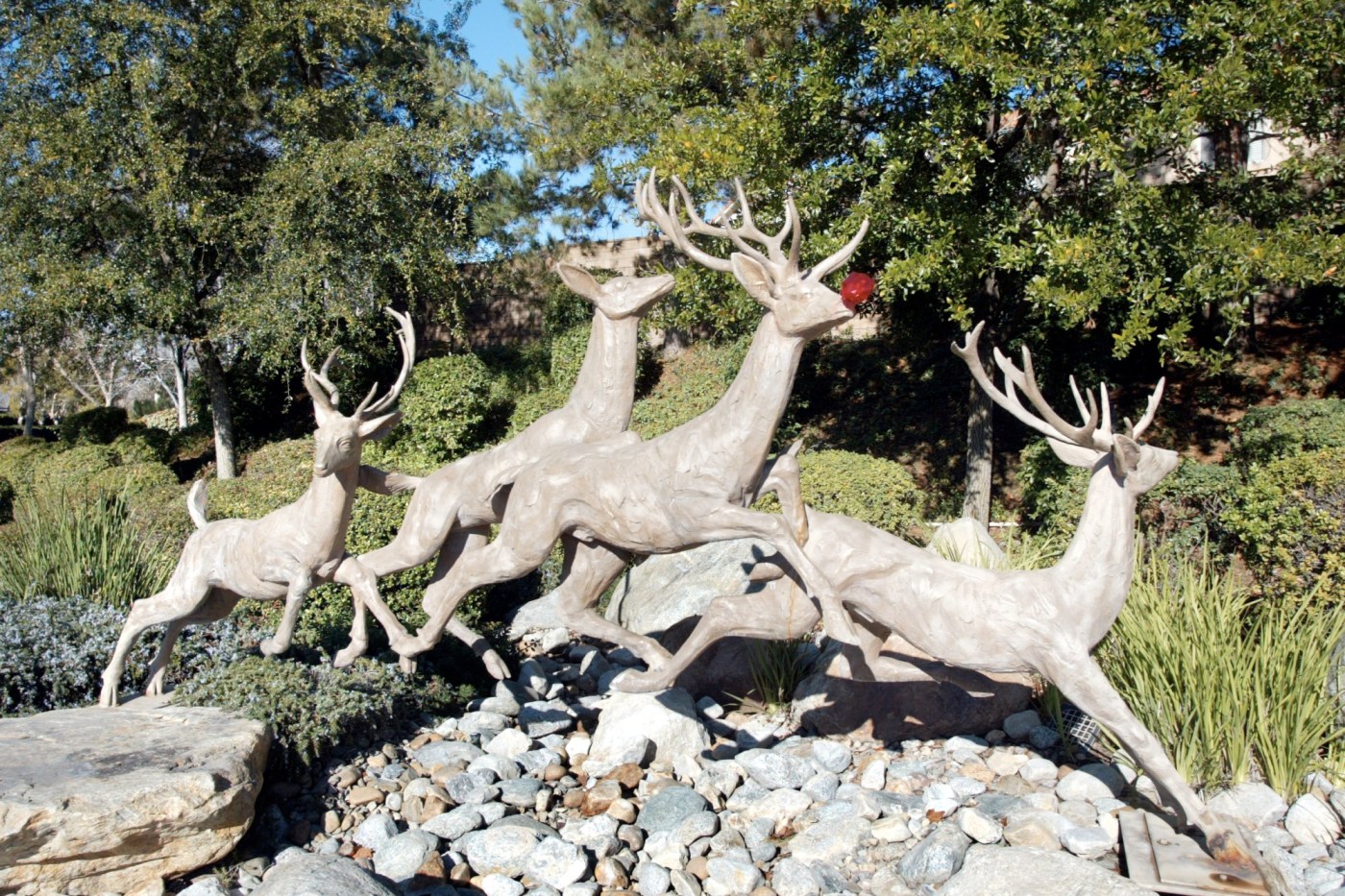On March 16, the Art in Public Places piece “Jumping Deers,” located at the north end of Berry Street, was vandalized and the thieves got away with one of the three bronze-sculptured deers.
The rest of the sculpture is now secured at the city’s public works yard.
Over the past four months, two more Brea public art pieces have been stolen or disappeared: “Vicky” at Puente Street and Whittier Boulevard and “Porpoise at Play,” at East Palm and Moonstone streets.
According to Brea Police Lt. Tony Barbosa, of the Investigation Division, offivers were able to recover “Vicky.” Well, sort of.
“Unfortunately, the statue had been cut up for recycling, and as a result, was no longer intact to be returned as an art piece,” said Barbosa. What a shame.
He added that very often, stolen artwork is targeted for scrap recycling, not for reselling as art.
The Brea Police Department works closely with law enforcement partners in our neighboring cities to track down metal thefts, exchange suspect information and share intelligence, Barbosa said.
“This collaboration,” he said, “includes using nationwide databases that monitor modus operandi, suspect descriptions and the types of metal being stolen.”
Jennifer Colacion, Brea’s community services manager, said that since the Art in Public Places program was founded in 1975, it has grown to include 192 art works, but 11 of those pieces have been stolen.
Maybe it is time for artists to work in other mediums that aren’t worth much or anything for recycling. How about clay, tin, steel or wood?
Brea is one of just a few SoCal cities with a public art program. It is also one of the first in California to have a private art development program, requiring new developments to include an art sculpture under certain criteria.
An art sculpture is required of developments of $1.5 million or more, and the cost of the sculpture must be equal to 1% of the project’s total building valuation.
The artwork must be a permanent outdoor sculpture that is placed in public view, owned and maintained by the property owner and lit at night. At present, security cameras aren’t required, but many of us think they should be. Maybe they also need to be surrounded by barbed wire.
And just any ole sculpture won’t due. No scooping out yard sales for one. The developer must commission an artist and have the proposed piece formally reviewed by the Art in Public Places Committee and the Cultural Arts Committee before being accepted for the development.
There are, however, some development projects exempt from the public art requirement. Those include houses of worship and residential developments with less than four dwelling units. Also exempt are public facilities constructed by nonprofits. Affordable housing projects are issued case-by-case exemptions, said Colacian.
When a property is sold, the public art piece remains with the property and becomes the responsibility of the new owner to maintain it.
The proposed Village at Greenbriar project is a good example of that. According to Colacian, that project will get credit for the sculpture currently on the site, “The Road Ahead,” which was originally installed by Mercury Savings. She did note that the project may require an additional art installation. That is something that would be confirmed if and when the project is submitted for plan check.
We should all be proud of Brea’s Art in Public Places program, and if you see something or someone suspicious by an art piece, let the police know.
“See something, say something” could save one of our city’s public art pieces.
Terri Daxon is a freelance writer and the owner of Daxon Marketing Communications. She gives her perspective on Brea issues twice a month. Contact her at daxoncomm@gmail.com.
